Blending in
What if you could build a twist that could mimicker the right smart undersea creatures escape predators? It could be used A an artificial skin that changes its appearance to hide something (flatbottomed submarines). Every bit an electronic wallpaper, it could thwart thieves by catching them on a out of sight camera. Or the new system could turn an stallion wall into a TV screen. Now how cool is that?
These are among the goals of a new project funded away the U.S. Navy. The project's scientists are taking lessons from nature to produce advanced electronics that may transform everyday objects. Their work also mightiness allow us to better regulate the temperature of buildings and save vim.
Umteen far-arrival goals of this project are still a long way off. But scientists have got begun making primary strides. Their teachers are several underwater species with an amazing ability to hide in plain sight.
Thoughtless camouflage
Take cuttlefish, some lesser-known members of the cephalopod (SEFF OH lo POD) family. The like their cousins, octopuses and squid, cuttlefish tend to have big eyes, arms with suckers, a bulb-shaped school principal and the ability to vanish earlier your eyes. They resemble creatures from a late-Nox revulsion movie. Nocturnal hunters, cuttlefish feed by dark. And their movements mystify: They can hover alike flying saucers in the water, then zoom onward by rippling fins along the edges of their bodies.
Just their real claim to renown: Cuttlefish are supreme masters of disguise.
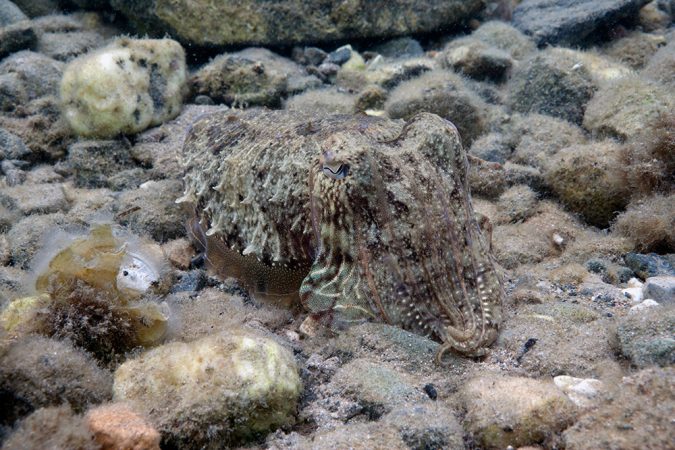
An octopus squirts stunned an muddy ink in which it hides. Not its cousins the cuttle and squid, though. They hide in plain sight by blend into their environs.
Body of water scientists believe cuttle change their colors with avail from tiny light sensors that cover their tegument. And these critters don't even have to give a view to concealment. Their bodies appear to do IT without thinking — that is, without receiving operating instructions from the brain.
Exactly how cuttle act this is a mystery. But Roger Hanlon is looking answers. Atomic number 2's a biologist at the Marine Biological Laboratory in Woods Hole, Wad. If his team up's assessment that the animal employs thought-out-of-school camouflage is confirmed, he says, "That would be a maiden."
Hanlon has deliberate cephalopods for 30 years. An accomplished plunger and photographer, he travels to secret spots in search of these quick-commute artists. Some hide out in the frore waters off northwest Spain. He's found others in a gnomish bay near Palm Beach, Fla.
The man of science's finish is to better understand how the skin of both the democratic cuttlefish (Sepia officinalis) and longfin inshore squid (Doryteuthis pealeii) operate like giant cameras. Their skin collects light in the murky submarine world. Then it uses that light to limit how to adjust its coloring and then that the creature can blend into its surroundings.
To examine how the critter does this, Hanlon's team up touched cuttlefish into his second floor laboratory at Forest Hole. There, pumps circulate fresh seawater from nigh Cape Cod through and through giant pipes to lots of huge circular Pisces the Fishes tanks.
Lydia Mathger dips a glass beaker into one tank and scoops up a palm-sized cuttlefish as it tries to scurry away. As she peers into the beaker, the animal hovers warily. She smiles with more than a little bit of pride at the critter. IT's a foreign species she has up from a tiny egg, same of many flown in from Europe.
"Like babies," Mathger says, the three-year-old cuttlefish need coddling. For lesson, she notes, "They have to be trained to take frozen food for thought by hand."
By perusing these babies, she and Hanlon have gleaned just about startling facts. Their findings clear up how cuttlefish masquerade by adopting the patterns saved in their surroundings.
Inside the cells of all living organisms are genes. These molecules contain information that controls cell activenes, including the output of proteins. One such protein, opsin, detects light. It's typically produced in the retina, a start of the eye. Simply in 2010, Mathger and Hanlon published a scientific study showing that the gene for opsin is also "turned on," producing the protein, throughout cuttlefish skin. That proved a double surprise.
"When we started, we persuasion: 'What on Earth is this doing in the scramble?'" Mathger recalled. Wherefore would skin need it? "It's the same visual pigment as in the centre."
Further searching showed the skin was producing opsin right next to tiny structures that control camouflage patterns in the skin. These structures, called chromatophores (kro MAT oh forz), are stretchy sacs of red, yellow surgery black pigment. Muscle fibers force out take out them into different shapes. They backside create patterns that modification as needed to help a cuttlefish blend into its surroundings.
Mathger believes that the light-sensing opsin may allow cuttlefish to "insure" colors finished their skin. She and other scientists directly are trying to find forbidden if the opsin communicates with the close chromatophores. "We really preceptor't know at this point," Mathger said. But her team up suspects that what the light sensor reports may mechanically trigger those colored sacs to reshape themselves into patterns that match their surroundings. And that would effortlessly give the critter a life-delivery disguise.
Many a oceangoing creatures have some light-sensing molecules on their skin and the ability to disguise themselves, notes biologist Tom Cronin of the University of M, Baltimore County. Atomic number 2's been studying calamari, flounder and mantis crab (that last one is a violent but tiny piranha that lives in tropical reefs).
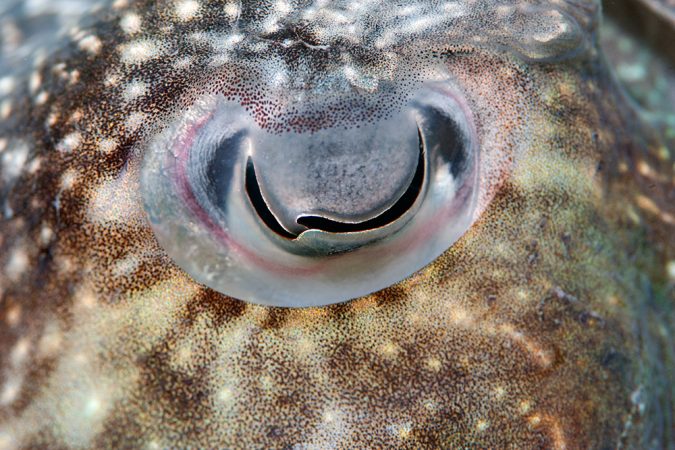
"Light sensing has lots of different jobs besides vision," explains Cronin, who is working with Hanlon. Light's presence, intensity and imbue privy relay selective information about whether information technology's day or night, an aquatic animal's depth — even whether a large predatory animal is temporary overhead. None of these is directly related to camouflage. Only what's surprising, Cronin observes, is that the skin of these creatures is somehow determination a new use for "the exact same protein that is in their middle."
Mimicking nature
Engineers are now stressful to adapt the things Cronin and Hanlon are learning for the development of electronic systems. Their finish: learning how to disguise nonliving objects.
Engineers use science to develop new products, tools or processes. Those at work on this project are exploring the idea of an artificial skin that — with the flip of a switch, or on its have — could give things disappear, says project scientist Richard Baraniuk. The electrical direct works at Rice University in Houston, Texas. For example, he says: Attach the pare to the outside of a submarine and — like magic — its bunch might lay down the vas visually disappear.
Or gues applying the system to an lepton "wallpaper" that worked untold the duplicate way, says project man of science John Rogers. He's a materials man of science at the University of IL at Field-Urbana. Materials scientists investigate the physical and chemical properties of everything from metals and plastics to semiconductors and ceramics. Rogers imagines an electronics-based paper that could transubstantiate the intact wall of a room into a television screen.
Some researchers are adoption from cuttle biology to make e-skin devices that can exchange their colors and patterning using the light forthcoming from their milieu.
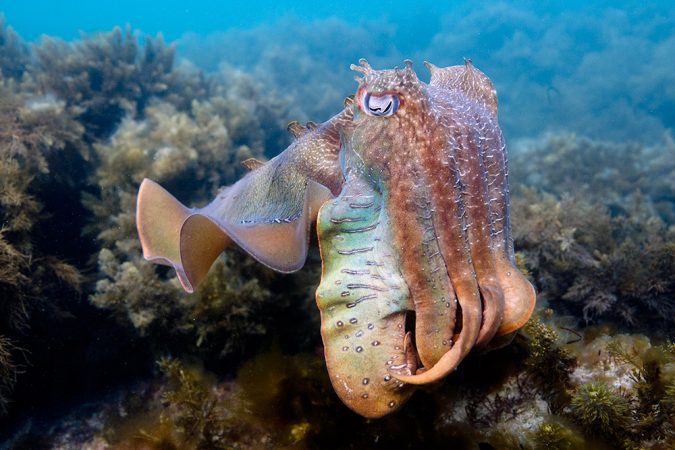
Baraniuk is underdeveloped a thin electronic wallpaper that's "non ilk any kind of imaging device that has ever been planned." It could get wind and transmit what's happening in a room. This would effectively turn on a surround into a heavy video tv camera. And information technology could operate without anyone in the room knowing information technology — including a thief. That's because the surround could camouflage itself independently. It would alter its appearance based on changes in inflowing light preferably than directions conventional from a central computer chip, or "brain."
Baraniuk says the unvaried material or coating might be able to disguise objects or even change the tone of your car. And just As the cuttlefish hides from predators, in hypothesis so too could your car hide in dealings. (Although for safety reasons, hiding in traffic would be very impolitic — and promising outlawed.) The coating could also do the opposite: make your car stand out.
Applied to the outside of buildings, the current wallpaper might even appropriate structures to hold up cool in the summer or emotional up in winter. How? By changing the color of the edifice. Dark colours draw more heat from the sun, piece sunlit colors reflect that heat up. So changing the color of a building could help its occupants stay comfortable.
Here, though, the light-changing properties of the skin would induce to be regulated by something other than just light. Engineers would take up to develop switches that would alter the artificial chromatophores in the building's tegument. Then the building's occupants could vary the structure's color based on season, sunlight intensity level or a thermoregulator setting.
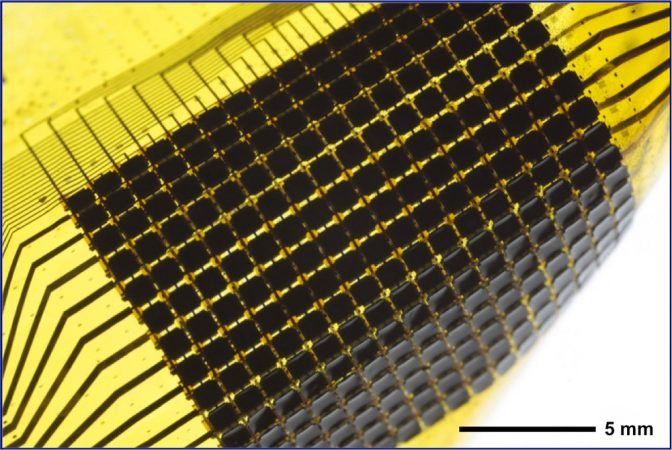
Rogers already has a sample Joseph Black-and-white electronic wallpaper that can match its surroundings. Flexile, it tooshie embody molded all over curved surfaces operating theatre around corners. He's fashioning his panels from plastic and silicon. This matrix would exist embedded with fluid sacs containing colored dyes.
Just every bit happening the cephalopodan skin, these sacs can stretch or contract. Such distortions would allow this come up to mix up into its surrounds. Beneath the sacs is a lower layer of white, reflective material. Information technology would soften the transition between the colors in adjacent sacs.
Relieve more to do
Many a obstacles stay ahead engineers can create disguise technologies that can disguise clothing automatically Oregon make the color of your auto suit your mood for the day.
Among those challenges: What bequeath control when you bet to turn on the camouflage? In animals, a complex nervous system manages that, possibly involving the brain. Merely an physical science wallpaper operating room submarine coating has no nerves operating theater brain, notes Andrea Tao. She's a nanosystems applied scientist at the University of California, San Diego. Engineers like Tao ferment happening supersmall systems. Nano- is a prefix that means peerless billionth. Here, it means one one-billionth of a meter.
Engineers could install a computer to stand certain a brain. Just they'd also undergo to figure out how to might IT, keep information technology tiny and make it rugged plenty to survive real-world conditions. That won't be simplified.
For case, Tao says, "We don't love what controls every squid cell." Perhaps the squid sees something with its eyes and relays that information to its pare. Or perhaps its skin cells react on their own. "Understanding that level of control is a headstone part in translating a natural system to a man-made one," she says.
As a matter of fact, she adds, "It takes a lot of creative thinking to total up with a camouflage scheme that will function same a squid's does." But having worked on other types of biologically inspired electronic devices, Tao is sanguine that creating an electronic skin or wallpaper supported a cuttlefish or squid is certainly possible.
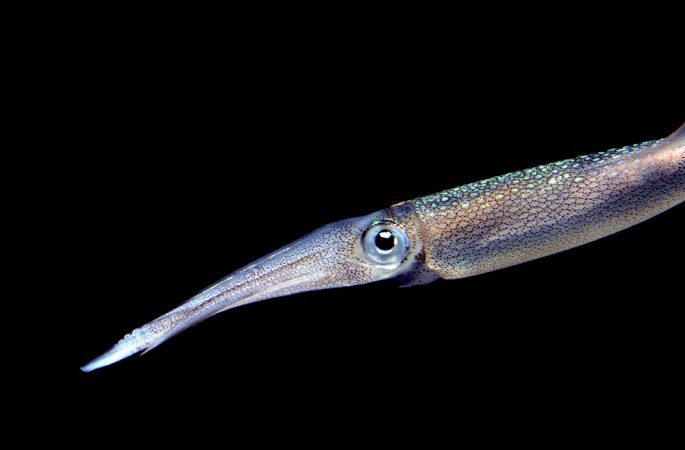
Baraniuk, Rogers and the other scientists enjoin they are delirious about a marriage of biology and engineering that could one Clarence Shepard Day Jr. produce a wallpaper-like skin to disguise objects. Moreover, Baraniuk predicts, "Whatever we get a line will be applicable way beyond mimicking camouflage."
Power Words
cephalopod Subocean creatures like squid, octopus and cuttle that have soft bodies without a backbone, but have hard parts inside (a beak) and tentacles. Thither are about 800 species of cephalopods.
camouflage Hiding people or objects from an foeman by making them appear to be part of the unbleached surroundings. Animals can also use camouflage patterns on their skin, hide or fur to hide out from predators.
chromatophore Little cephalopod organs filled with red, black and yellow pigment that are pulled into different shapes by muscles. As they change shape, they fles distinct camouflage patterns connected an animal's skin.
engineering The application of knowledge domain and mathematical principles to practical ends, so much as the design, manufacturing and operation of expeditious and economical structures, machines, processes and systems.
gene A segment of DNA that produces certain physical characteristics or operations in life things.
habitat The area or rude environment in which an animal or plant normally lives, much as a desert, coral reef or freshwater lake. A habitat can live home to many an different organisms.
materials science The science of how the structures of materials on an atomic or molecular scurf relate to their everyday properties.
opaque Impotent to undergo through, blocking light.
pigment A core that produces a characteristic color in plant or tuna-like tissue. It is as wel the term for chemicals that manufacturers use to tint blusher.
proteinsMolecules that contain carbon copy, hydrogen, oxygen, nitrogen and usually atomic number 16. They are composed of molecules called amino acids. Proteins are fundamental components of all animation cells and include many substances that are required for the proper functioning of an organism.
opsin A weak-detection protein that is usually ground in a part of the middle called the retina.
atomic number 14A metalloid, semiconducting constituent used in making electronic circuits. Pure silicon exists in a shiny, dark-Asa Gray crystalline descriptor and as a shapeless powder.
Word Find (click Hera to print puzzle)


0 Response to "Blending in"
Post a Comment